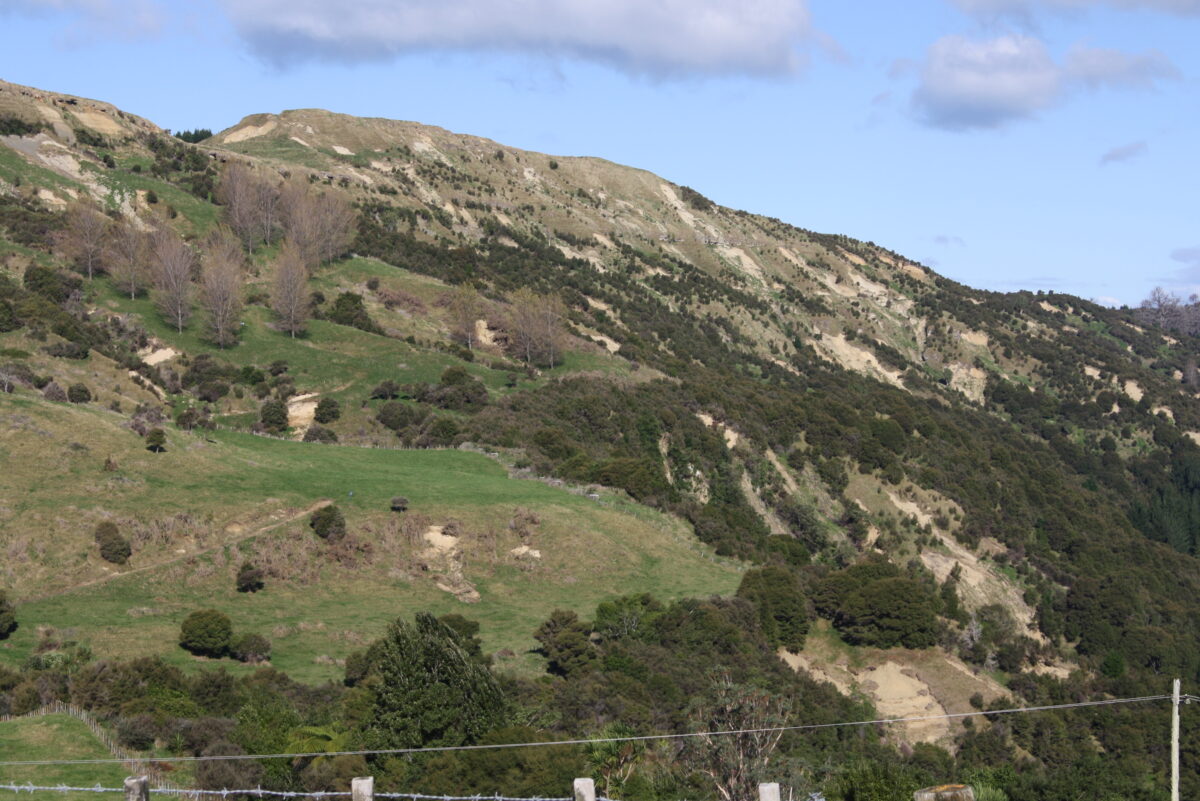Now that the recovery phase of Cyclone Gabrielle is underway it is important that decisions are based on fact and not on emotion or philosophy. I fear the enthusiasm for manuka is based on the latter not the former.
We need to remind ourselves that Hawke’s Bay is a very young physical environment. The Heretaunga Plains have been built over the last 250,000 years by more than 250m depth of sediment, mostly generated before human occupation. Storm generated sediment is not new. It is a continuing and natural process which we human beings are endeavouring to stop! Our hills are the result of erosion and our alluvial plains are the result of sedimentation from erosion. Sedimentation did not start with the Maori fires of 550 years ago or European forest clearance. Those activities did, however, speed it up. Erosion has been an essential part in the evolution of the region. However, if we are to continue developing a resilient future we must minimise the risk and impact of this sediment.
Yes, we have converted wetlands to productive land. Before development began most of the Heretaunga Plains was wetland. These are now one of the food baskets of the country. Most of our valleys were wetlands, they are now highly productive pasture and croplands. We need to remember no wetland would have prevented the Gabrielle tsunami of debris and water from devastating the Esk and other areas. Neither would have widening the flood ways. Development requires compromises and the removal of many wetlands was one of those. Yes, re-create wetlands but ensure they fit within the NEW resilient ecology.
Pine forests soak up carbon dioxide and they do it far more rapidly than a planted native forest. They also produce a profit and when managed effectively minimise erosion risk. Hawke’s Bay pine forests during Gabrielle suffered very little erosion. The recent HBRC analysis of the wood debris revealed that the main debris source was NOT pine but was willow. Why was there very little native tree debris? The reason is there are very few areas of mature native forest adjacent to rivers in the flood catchment areas. If these existed, there would most likely have been whole native tree debris washed away from the same alluvial environment as the pine trees.
Manuka is a pioneer species but it is not the panacea for healing the hills. A peer reviewed study of the manuka planted on the steep slopes in the Tangoio Soil Conservation Reserve identified, to quote Dr Mike Mardon (NZ Journal of Forestry Science), “There is little quantitative data to establish when (i.e., how many years after planting) these plantings likely afford effective mitigation against the initiation of shallow landslides”. The study also identified that 6-9 years after planting the greatest proportion of the manuka root mass was less than half a metre deep and no roots were found below 1 metre. This indicates manuka is not deep rooting and may not offer protection from landslide erosion for many years.
Many years of experience in Hawke’s Bay and other parts of New Zealand lead me to believe that over much of our hill country the most resilient land use is a healthy and productive pasture supported by space planted erosion control poplars. Conversion to closed canopy erosion control forest is the last resort and should be reserved for only the most erodible hill country.
Garth Eyles has worked for decades in land management and written books about Hawke’s Bay landscapes. He was involved in the development of Tutira Country Park from its inception in 1998 until 2008.


Hi, it is interesting to compare storm devastation in HB with that of the Nelson area. The Grampians had significant gum tree damage while native species of Manuka seemed unaffected.